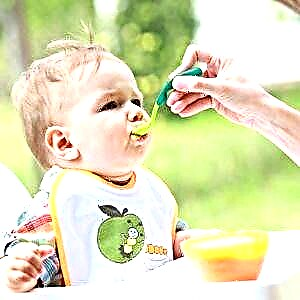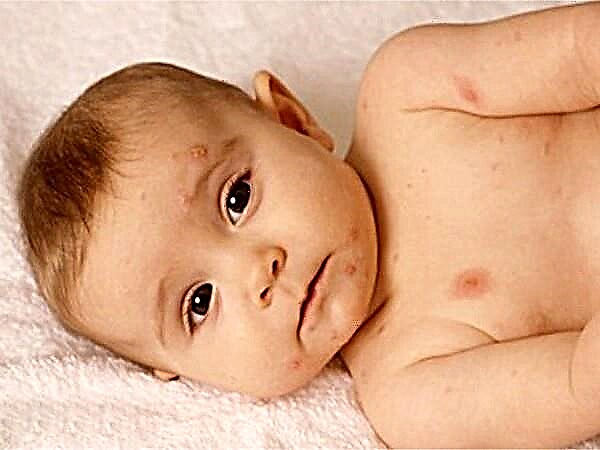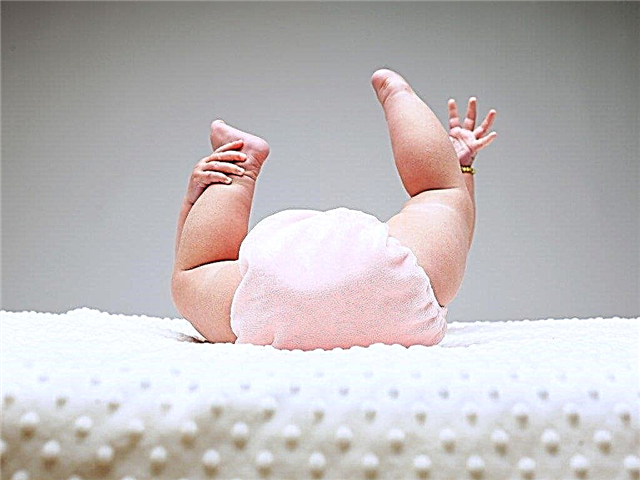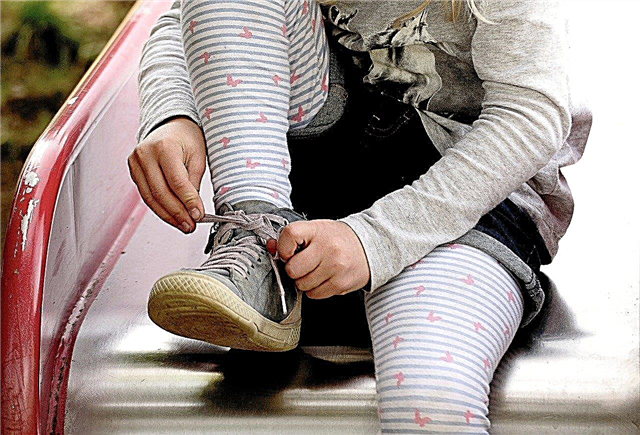Six months is a rather significant date in the life of an infant. There are so many events and new experiences at this particular turn. First feeding, first tooth. And the first syllables, although they are not realized. Having overcome the first half of the year, the baby gradually becomes a person, an individual with its own features and characteristics. The baby grows and develops with the same intensity characteristic of the first year of life.
What can a child at 6 months do?
It will be useful for parents of a newborn to find out what a baby can do at 1 month. To do this, you should read an informative and informative article by a children's doctor.
Be sure to familiarize yourself with what a 2-month-old baby should be able to do, what basic skills and abilities a two-month-old baby has.
Find out from the children's doctor's article how a child develops at 3 months, what are the basic skills and abilities of a baby at this age.
Useful information about what a 4 month old baby can do. The pediatrician tells in detail what activities are effective at this age and when to worry about the development of the baby.
- if the baby has not yet learned roll over on the back and on the stomach, at six months you must be able to do it. Parents need not to lose their vigilance and not leave the baby alone. Especially if the baby lies on a plane from which it is easy to fall, carried away by rolling from the back to the tummy and vice versa;
In order not to worry about a bruise on the forehead, a broken nose or a possible concussion later, always insure the child, do not lose sight of him, if necessary, put obstacles in the form of pillows or something else.

- the child is already sitting, confidently or with support. Some babies at this age will already be able to sit down on their own from a prone position, helping themselves with their arms. Others need help by gently lifting them by the handles from the supine position. And if before six months pediatricians do not recommend that a girl get involved in long-term sitting, then 6 months is the optimal time to start sitting;
If a 6 month old baby does not sit and does not even make an attempt at this, does not express any desire at all, you should consult a doctor.
- a 6 month old child makes his first attempts at crawling. This usually happens when from a sitting position, moving the arms, he moves his body forward. But since the muscles of the legs are not yet sufficiently strong for such exercises, he moves in a bell-like manner, actively helping with his hands;
- a baby at 6 months successfully masters the skills of handling a spoon. During the meal, he actively opens his mouth and removes food from the spoon. At this age, you can already learn to drink from a circle;
The best option for the first mug is a sippy cup. It is lightweight, when overturning a lot will not flow out of it, and it will be easier for the baby to regulate the volume of the pouring liquid.
- toy handling skills continue to develop. The kid can already grab them from any position, shift them from one hand to the other. Among the toys, the baby makes pets, with which he is especially pleased to play.
Neuropsychic development and emotions
The amount of information perceived by the child and processed by his brain is increasing. The senses receive their food for the development.
Physiologically, the child is still farsighted, and it is not very handy to examine objects at too close an approach.
 But the baby is already beginning to distinguish colors a little. The very first is red. It is this color that toys and objects attract the baby in the first place. Children 6 months old not only distinguish colors, but can also divide them into categories "light" and "dark".
But the baby is already beginning to distinguish colors a little. The very first is red. It is this color that toys and objects attract the baby in the first place. Children 6 months old not only distinguish colors, but can also divide them into categories "light" and "dark".
A 6 month old baby begins to react to his name. Hearing him, he turns around, looking for the source of the sound, the owner of the voice. The sound of your own name is very pleasant to the baby. In response, he perks up, smiles, moves his arms and legs.
Of course, there is no such reaction to someone else's name. The infant does not react in any way or simply looks at the speaking person, waiting for the continuation of the speech.
In communicating with others, the child shows an increasing number of emotions and feelings. It is no longer just joy and sadness. A whole range of baby's reactions to the events around him and to communication with other people grows and develops.
Of course, he first copies all this, adopts it from his parents. With age, all these unconsciously copied reactions will become part of the child's personality.
In dealing with unfamiliar people, the baby is careful. In most cases, of course, he will not scream at the sight of them, but he will not jump quickly from his mother's hands either. A child at 6 months of age prefers to be wary of strangers.
 Games are becoming more diverse. The child likes to take toys, pull them into his mouth, and taste them. Now he not only shakes them, listening to the sound. The kid can throw them with force, knock on the crib or the floor, offer them, holding them out to mom or dad. Seeing a small fragment of a hidden toy, he finds it, pulls it out and plays for a long time.
Games are becoming more diverse. The child likes to take toys, pull them into his mouth, and taste them. Now he not only shakes them, listening to the sound. The kid can throw them with force, knock on the crib or the floor, offer them, holding them out to mom or dad. Seeing a small fragment of a hidden toy, he finds it, pulls it out and plays for a long time.
The development of a child at 6 months already allows him to actively improve his skills in handling a mug and a spoon. And although he, of course, still cannot eat on his own, he will not refuse to just hold a spoon in his hand while eating. In the future, this will stimulate the baby to eat on his own, without the help of his parents.
A child in six months pleases his parents not only with communication and emotions themselves, but also with developing speech. This is the time for babbling to begin. Previously released sounds merge into the syllables "ma", "pa", "ba". Sometimes the words "mom", "dad" are even heard. But these are still not real words, because they are unconscious and are obtained by connecting, repeating sounds and syllables heard by the baby from loved ones.
Physical development
By the age of six months, the baby has already grown up decently and has gained in body weight.
The body weight of a child at 6 months, compared to birth weight, doubles. You can more accurately calculate how much a child should weigh at 6 months by adding up the figure of birth weight and the amount of the due increases for the previous months. By the age of six months, the baby is gaining an average of 4.5 kilograms.

The growth of a child at 6 months also depends on the initial parameter. Usually in 6 months the baby grows by 18 centimeters.
As the baby grows, the proportions of his body also change. The head becomes smaller in relation to the body, while the ribcage grows more intensively. By six months, their circumferences in most cases are equated, become equal to 42 - 44 centimeters.
More precisely, the centile table, which is on the table of every district pediatrician, will tell you about the ideal body weight and height of the child.
The weight gain and the size of the gain of a girl and a boy may differ. Usually boys develop more physically.
Nutrition
A baby's nutrition at this age includes formula or breast milk and complementary foods. Moreover, the leading role is given to milk and products that replace it.
6 months is the deadline for introducing complementary foods. Infants receiving formula start feeding at 4 to 5 months. For babies, the optimal age is 5 - 6 months.
It is not worth delaying, as well as in a hurry, with the beginning of complementary feeding. Previously, its introduction is fraught with allergies and digestive problems, later - anemia, rickets and hypotrophy.
After six months, the baby needs more energy, and therefore calories. Its need for minerals and vitamins is increasing. Complementary foods, moreover, develop the skills of chewing, swallowing, enrich the baby's life with new tastes and smells.
From the children's doctor's article, parents can learn how to properly implement vegetable complementary foods and how to make mashed potatoes from various vegetables.
Basic Rules:
 The introduction of complementary foods begins with cereals or vegetable puree. This is determined individually for each child.
The introduction of complementary foods begins with cereals or vegetable puree. This is determined individually for each child.- Time for new food is morning. The baby is hungry at this time and does not want to sleep. Therefore, she will not mind much at the sight of new food. This will allow parents to observe the baby during the day.
- Small volume. We start with 3 to 5 milliliters. This is a teaspoon. Then we supplement with breast or mixture.
- A gradual increase in the amount of food. For 5 - 7 days we bring the amount of food to the age norm, replacing one feeding with the complementary food product.
- New product introduction no earlier than 4 days later.
- We introduce multi-component cereals, vegetable and fruit purees after mono-component ones, at 7 - 8 months.
The best time to introduce fruits and vegetables into the diet is summer. Dishes prepared from fresh, not defrosted products are much tastier and more valuable for the child's body.
A baby 6 months old will most likely not give up breast even after the introduction of a full amount of complementary foods. And he will ask her after a hearty breakfast, and after a hearty dinner. In fact, this happens very often. Do not worry, the time will come, and the baby will completely switch to adult nutrition.
Daily routine and sleep
During the day, the baby still has 2 - 3 daytime sleep and one nighttime sleep. The duration of the day is individual. From half an hour to several hours.
 Continuous night sleep is 6-7 hours, then the child usually wakes up for reinforcement. Some children are already asleep all night. True, this is a rarity among babies.
Continuous night sleep is 6-7 hours, then the child usually wakes up for reinforcement. Some children are already asleep all night. True, this is a rarity among babies.
Their active sucking phase shifts to the last few hours of sleep.
In order for the crumbs to sleep better and longer, small rituals can be introduced into their lives. A ritual is a certain sequence of actions performed before going to sleep.
For example, gymnastics, or exercise on fitball, - bathing - massage - a bottle or chest before bed - a lullaby. So, getting used to the given sequence, the child will already know that after all these actions it is necessary to fall asleep.
First tooth
Perhaps not the first, but the second or even the third. For most babies, six months is the most common time for their first teeth to appear. The bottom ones are cut first.
Often this process is accompanied by a slight increase in temperature, loose stools and a general deterioration in mood. But as soon as the tooth appears above the level of the gums, all the symptoms disappear.
At this time, it is necessary to devote more time to handling toys and washing hands. After all, babies pull everything into their mouths. Especially when everything there itches and hurts. And swollen gums are an excellent environment for the development of all kinds of stomatitis.
If a baby sucks on a pacifier, it's time to wean it off. The pressure exerted by the pacifier on the growing teeth can lead to malformed jaw apparatus.
Offer your baby a teether instead of a nipple.
How to develop a child at 6 months?
Baby development never stands still. The entire environment, with its sounds, smells, tastes and objects, already enables the development of a 6 month old baby.
It is important for parents to know that their main contribution to the development of a child from 6 to 7 months is the creation of optimal conditions for the safe knowledge of the baby of this world and all kinds of help and encouragement.
For a child of 6 months, various toys play an important role. The simplest musical instruments will be useful - tambourines, maracas, drums, xylophones.
 Balls of different sizes and colors, toys made of materials of various textures are of interest for a 6-month-old baby. It will be interesting for the kid to get acquainted with the tactile and sound sensations obtained from these games.
Balls of different sizes and colors, toys made of materials of various textures are of interest for a 6-month-old baby. It will be interesting for the kid to get acquainted with the tactile and sound sensations obtained from these games.
For the active development of speech, you need to talk a lot with the baby. Some young parents, however, find it rather difficult to tune in to a constant stream of speech. Don't worry. This skill comes to everyone over time.
The sixth month is a good time to buy your first book. Heavy cardboard or fabric editions are preferred.
Complexes of gymnastics, exercises on fitball, massage and baby swimming will help in the development of motor skills.
Closer to the year, you can teach your baby to differentiate the main shades. However, the question of how to teach a child about flowers is also relevant at the age of six months. That is why the baby needs to show objects of various shades to improve visual and color perception.
When to worry?
Of course, the development of each crumb is individual. But there is a certain list that a child at 6 months should be able to do without fail. And a baby who cannot hold his head at 6 months, for example, deserves the close attention of doctors.
You must consult a doctor if:
- the baby does not hold his head confidently;
- when lightly pulling on the handles, it does not attempt to sit down;
- does not respond to emotional contact with a smile or animation;
- does not distinguish between parents and strangers;
- does not try to pronounce sounds;
- does not respond to sounds and speech;
- not interested in toys.
Always remember that your baby is beautiful. And the time spent with him is unique.

 The introduction of complementary foods begins with cereals or vegetable puree. This is determined individually for each child.
The introduction of complementary foods begins with cereals or vegetable puree. This is determined individually for each child.

